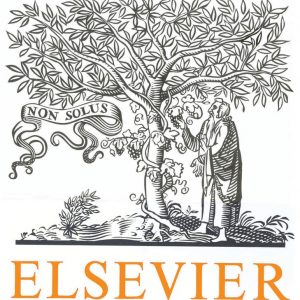دانلود رایگان مقاله لاتین تحقیقات تنوع تیم از سایت الزویر
عنوان فارسی مقاله:
آینده گذشته، حال و آینده بالقوه تحقیقات تنوع تیم: از تنوع ترکیب تا تنوع ظهور
عنوان انگلیسی مقاله:
Past, present, and potential future of team diversity research: From compositional diversity to emergent diversity
سال انتشار : 2016

برای دانلود رایگان مقاله تحقیقات تنوع تیم اینجا کلیک نمایید.
بخشی از مقاله انگلیسی:
3. Moving forward: linking trait and state diversity
Research in groups and teams has identified a range of issues that could well be labeled diversity but are typically not recognized as such in diversity research, presumably because they concern what we call state diversity rather than trait diversity: variation in more malleable member attributes such as cognition and affect. These attributes are malleable in the sense that – unlike stable traits such as demographic or personality variables – they cannot be assumed to remain unchanged during team interaction, even though they can be treated as composition variables in the sense that they exist independently from the team. Much of this is related to the notion of groups as information processing systems (De Dreu, Nijstad, & van Knippenberg, 2008; Hinsz, Tindale, & Vollrath, 1997) – a notion that aligns well with the informational resource perspective in diversity research. Research in group decision making in particular has a long history of studying how groups deal with decision-related state diversity. Diversity in decision preferences as a composition variable, for instance, is a key factor in research in social decision schemes, which aims to understand how group decisions arise from individual member preferences and decision rules (Davis, 1973; Stasser, 1999). Part of this research speaks to how what initially is a minority position (reflecting diversity of perspectives) can come to be the group decision, e.g., through ‘‘truth wins” or ‘‘truth supported wins” decision schemes (Laughlin, 1980). This is complemented by research in minority influence that aims to capture the conditions under which a minority position can change the majority opinion (Nemeth, 1986). Group decision making research also has a rich tradition in studying groups’ use of distributed information – information initially not known to all members (Gruenfeld et al., 1996; Stasser & Titus, 1985; Stasser et al., 2000). In an interesting counterpoint to research on diversity in decision preferences, this research shows that it can often be similarity in decision preferences based on information known to all that stands in the way of arriving at a superior decision suggested by distributed information. One way to think about this research is that it pertains to how groups deal with informational diversity. A third tradition that is relevant here is research in expertise diversity. This research suggests that teams can struggle to identify their most expert members, and, as a consequence, perform worse than they would if they made better use of their members’ expertise (e.g., Laughlin & Branch, 1972; Littlepage & Silbiger, 1992). Even when there is evidence that more expert members have more influence on team performance (Sniezek & Henry, 1989), there is also evidence that dominance is mistaken for expertise (Littlepage, Schmidt, Whisler, & Frost, 1995) and that for teams to accurately recognize member expertise supporting conditions need be in place such as accurate feedback on relative expertise (Bonner, Baumann, & Dalal, 2002). A particularly interesting notion in relationship to bridging trait and state diversity research is that visible trait diversity may help identify member expertise. For example, research by Phillips and Lloyd (2006) suggests that demographic differences may alert teams to underlying knowledge differences within the team.
برای دانلود رایگان مقاله تحقیقات تنوع تیم اینجا کلیک نمایید.
کلمات کلیدی:
[PDF]A review of perceived di... - Wiley Online Library - Stanford Graduate ... https://www.gsb.stanford.edu/sites/.../A%20review%20of%20perceived%20di.._0.pdf diversity. We conclude by discussing potential areas for future research. ... the classic definitions and theories of diversity in teams (van Knippenberg et al., 2004) ... [PDF]Diversity as Disagreement: The Role of Group Conflict https://www.gsb.stanford.edu/.../Jehn%26Greer.2012.DiversityandConflictChapter.pdf by KA Jehn - Cited by 7 - Related articles Aug 8, 2012 - needing future research will then be highlighted, with special attention to how diversity may promote not only ... ating process that has the potential to explain the effects of ... metric experiences of conflict in teams by diverse. Searches related to potential future of team diversity research group diversity components diverse groups examples group diversity definition diversity groups list effective diversity programs what is group diversity inclusion and diversity in work groups: a review and model for future research traditional model of diversity
